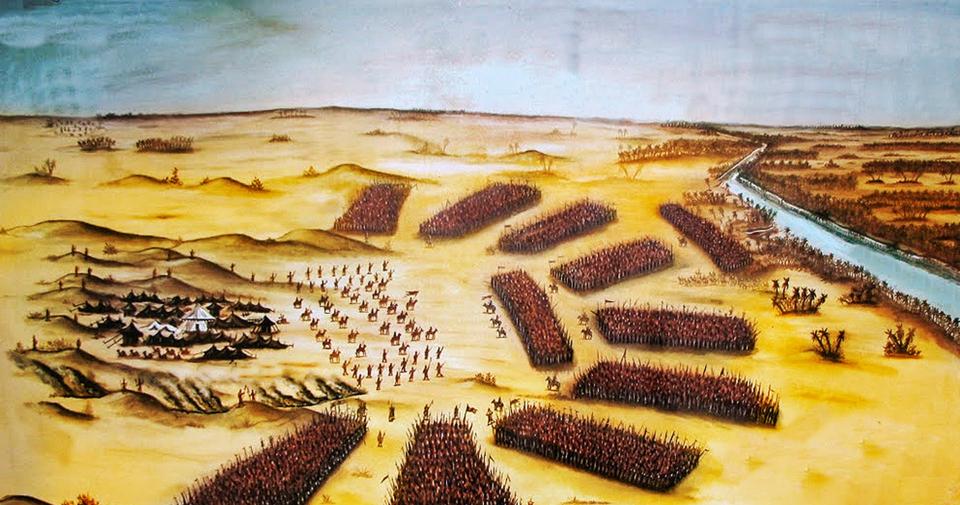Kuldeep Kumar
The tragedy of Karbala is ever present in the Muslim consciousness though the two major sects of Islam—Sunni and Shia—have internalised it in different ways. It looks that as long as the great schism exists, the tragedy of Karbala will continue to be repeated and the wounds of history will not be allowed to heal. The original tragedy took place on the tenth day of the month of Muharram in 680 CE when Muhammad, the prophet of Islam, had been dead for fifty years.
According to Nationalheraldindia.com, this day is known as Ashura, the most solemn date in the Shia calendar comparable to Yom Kippur or Easter Sunday, as on this day the prophet’s closest male descendents were massacred and the women of his family were taken prisoner and chained. Ever since that day, it is an occasion for intense ritualised mourning for Muhammad’s grandson Hussein, revered by the Shias as the Prince of Martyrs, who was killed on Ashura in the desert of Karbala, now a city in present-day Iraq. The devout Shias maintain that every day is Ashura and every place is Karbala. Little wonder that even in distant India, every village or town where Shias live has a symbolic representation of Karbala to keep the memory of the tragedy alive.
And the tragedy keeps repeating itself every now and then as was evident on March 4, 2004 when Sunni terrorist organisation al Qaida struck Karbala in Iraq on Ashura with cruel precision and massacred and wounded hundreds of Shia mourners who had gathered in the holy city. The original massacre that took place in the seventh century laid the foundation for Shia-Sunni split and its story, told and re-told with embellishments and changes in the contours of the narrative, has acquired the character of an epic over the past fourteen centuries. Like all epic stories, it continues to live in the hearts and minds of its listeners and readers. Even the legendary Hindi-Urdu writer Premchand wrote a play titled Karbala to narrate the heart-wrenching story of Hussein’s martyrdom.
Like in the war described in Indian epic Mahabharata, all the dramatis personae of the Karbala tragedy are closely or remotely related through common bloodline and display the same hatred and cruelty that only members of an extended clans can towards each other. The way women of the sacred House of Muhammad were disrespected and tormented in the desert of Karbala on the orders of Caliph Yazid reminds of the way Draupadi was shamed and disrobed on Duryodhana’s orders in the royal assembly of the Kauravas.
“Religion is an amazing phenomenon that plays contradictory roles in people’s lives. It can destroy or revitalise, put to sleep or awaken, enslave or emancipate, teach docility or teach revolt,” said Ali Shariati, the charismatic lecturer who played a major role in laying the intellectual foundation of the Iranian Revolution in 1979. Ayatollah Khomeini was perceptive enough to take the cue and understood that Karbala was a heavily loaded religious symbol with infinite adaptability as well as enormous possibilities to act as a wellspring of emotional, religious, social and political energies. Under the oppressive Shah regime, the Karbala story resonated across the dividing lines of orthodox clerics and secular intellectuals, liberals and conservatives, urban Marxists and tradition-respecting rural folk alike. The story continues to resonate as the publication of a 19th century Bengali novel in English translation makes amply clear.
In 1885, Mir Mosharraf Hossain, who hailed from a zamindar family of east Bengal and worked mostly as an efficient manager of zamindars’ estates, decided to tell the story of Karbala in his own Bengali language, using his literary imagination in full measure. He penned a novel titled Bishad Sindhu (Ocean of Melancholy) and it became an instant hit. Such was the popularity of the novel—both among the Muslims and the Hindus—that within a year of its publication, it ran into five reprints. A prolific writer, Hossain was born in 1847 and authored 35 books until his death in 1911 but Bishad Sindhu is considered as his best.
Its language baffles literary critics to this day as it is a highly Sanskritised version of Bengali wherein Persian and Arabic words have been studiously avoided and even for a commonplace word like masjid, the word mandir has been used.
In her highly informative introduction, Alo Shome tells us that the huge success of Bishad Sindhu encouraged Mir Mosharraf Hossain to write two additional segments called ‘Uddhar Parva’ (Operation Rescue), published in 1887, and ‘Yazid Badh Parva’ (The Slaying of Yazid), published in 1891. Later, the three separate parts were printed together and the first part came to be known as ‘The Story of Muharram’. The English translation offers a detailed rendering of Part I along with the first three chapters of ‘Operation Rescue’. The rest has been presented in summary. The translation is excellent and has the flow and natural flavour of an original.
Besides the Introduction, the translator has added two very useful sections to the book—‘The Language of Bishad Sindhu’ and ‘The Indian Connection’. She gives a brief historical outline of how it were the Muslim rulers of Bengal who for the first time patronised the local languages and thus helped develop Bengali into an independent language of daily as well as intellectual discourse and how Sanskrit came to this part of the country rather late. In ‘The Indian Connection,’ she tells us the story of those Brahmins who lived in Arab lands in the seventh century and fought in the Battle of Karbala and sacrificed their lives for Hussein and his cause. Their descendants continue to live in different parts of India and are called Husseini Brahmins.

